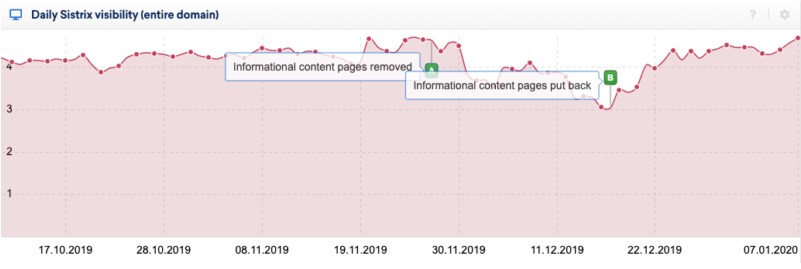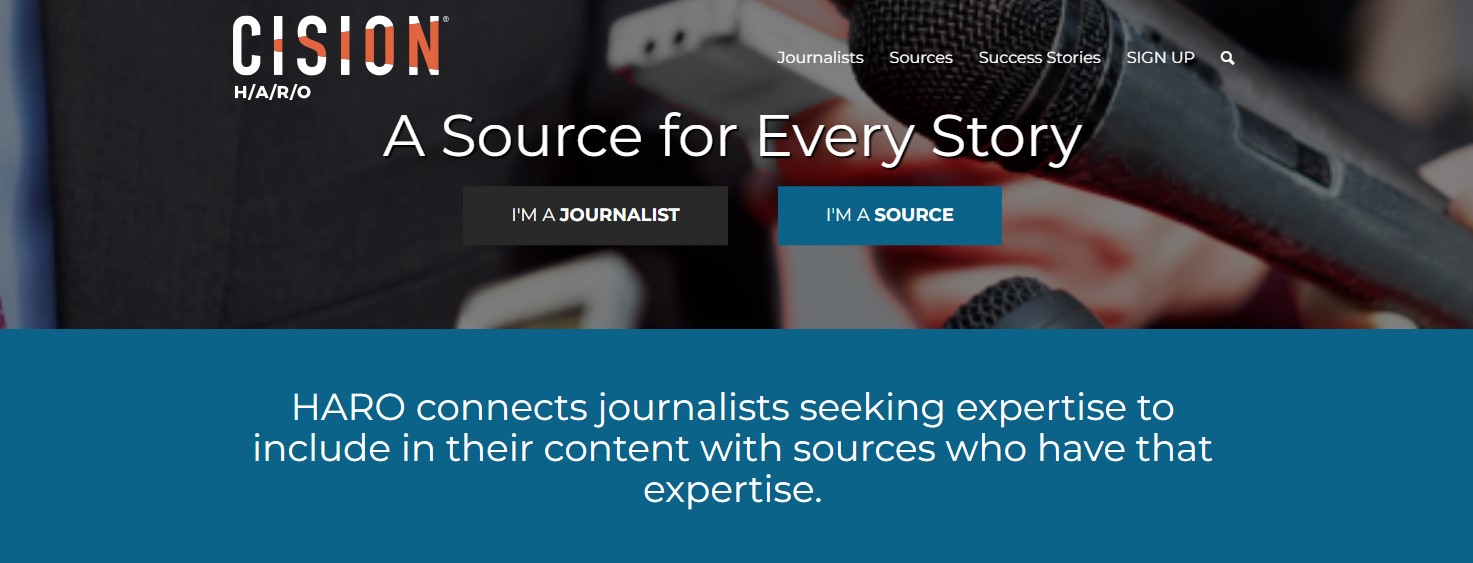Have you ever wondered how to make your online store stand out in the crowded search result pages? The secret is in building strong links – a strategy that’s like making the right connections to help your store shine brighter on the internet.
As we move into 2024, ecommerce link building is more important than ever. It’s not just about having great products anymore; it’s about how easily people can find your store online. This guide is packed with fresh, effective ways to bring more visitors to your site and boost your sales.
We’ll cover everything from making the most of digital PR to using affiliate programs smartly. Each method is a step towards making your e-commerce site more popular and successful. So, let’s dive in and explore how you can make your site a top destination for shoppers!
1. Create High-Quality, Linkable Content
If you want your store to get noticed on Google, just having lots of products is not enough. It’s also about creating great content that other websites want to link to. This kind of content is a secret weapon in SEO.
Let’s look at a case study from Search Engine Land. We have an online store with lots of products and different sections. They also had 25 special articles that gave shoppers extra information. These articles didn’t sell products directly, but they were important in another way.
One day, the store decided to remove these articles and saw a big problem. Their website wasn’t showing up on Google as much as before. It turns out, many other websites had been linking to these articles, and when the articles disappeared, those links disappeared too. This hurt the store’s visibility on Google.
After realizing this, the store brought back the articles. And guess what? Their visibility on Google got better again, just like before. This shows how important good, informative content can be for an online store.

How to Make Content That Works Like This:
- Understand Your Customers: Think about what your customers are curious about or what problems they have. Your content should give them answers and help.
- Be Helpful and Interesting: Write articles that go deep into topics and give your readers something they can’t find anywhere else.
- Make It Share-Worthy: Create content that’s so good, people will want to share it with others. This could be through surprising facts, useful tips, or interesting stories.
- Use Different Formats: Not everyone likes to read. Try using pictures, videos, or even podcasts to reach more people.
- Connect Your Content to Your Products: When you write an article, find ways to link it to what you’re selling. This should feel natural, not forced.
Creating great content isn’t just a good SEO trick. It’s about making your online store a place where people can learn and trust your brand. When you focus on giving real value through your content, you’re not just chasing clicks; you’re building a community.
2. Do Cold Outreach
Cold outreach for link building is common, but doing it right is where the real challenge lies. It’s not just about sending emails; it’s a strategic effort that requires skill and sometimes, the expertise of professionals. To illustrate this, let’s explore a compelling case study from Outreach Monks.

REPRESENT CLO, a trendy men’s streetwear brand, was initially skeptical about the benefits of SEO. Their focus had been on social media and Google ads to drive traffic and sales. Despite the success in those areas, the competitive nature of the men’s streetwear market called for a more robust strategy.
In May 2022, Outreach Monks took on the challenge. Their strategy was to target high-quality, relevant backlinks, a key to improving the brand’s search rankings and organic traffic. The focus was not just on quantity but on securing links that mattered.
The results were nothing short of impressive:
- Organic Traffic: Jumped from 66k to 132k monthly visitors.
- Keywords: Ranking keywords increased from 15k to 42k.
- Traffic Value: The estimated monthly traffic value tripled from $15k to $40k.
- Rankings: Significant improvements in rankings for competitive keywords such as “varsity jacket,” “graphic tees,” and “oversized t-shirts.”
The success was so pronounced that REPRESENT CLO decided to increase their investment in the link-building campaign. Their story is a testament to the untapped potential of well-executed SEO strategies in the e-commerce world.
Key Takeaways for Your E-Commerce Business:
- Professional Help Can Make a Difference: Sometimes, the expertise of a professional link-building service can be the game-changer your SEO strategy needs.
- Quality Over Quantity: Focus on securing high-quality backlinks relevant to your niche. This not only boosts your SEO but also attracts the right audience.
- Monitor and Adjust: As your campaign progresses, keep an eye on the results and be ready to adjust your strategy and budget accordingly.
3. Utilize Broken Link Building

While not a silver bullet, broken link building can be a useful addition to your overall link building strategy. This method has a lower success rate compared to others, but when used creatively, it can yield valuable results.
The concept is straightforward: find broken links on other websites and suggest replacing them with links to relevant content on your own site. It sounds simple, but the challenge lies in persuading website owners to make the switch. The key question is, why would they want to link to your page?
There’s no one-size-fits-all formula here. Be creative in how you present your content as a worthy replacement. Maybe your content provides updated information, a unique perspective, or additional resources that the original link lacked.
It’s important to note that broken link building should be part of a diversified link building strategy. Relying solely on this method is unlikely to yield substantial results. Instead, use it to complement other tactics like content marketing and cold outreach.
4. Business Directory Listings

An often overlooked but highly effective method in link building is utilizing business directory listings, especially local ones. For e-commerce stores, this approach can be straightforward and surprisingly beneficial, often without any cost.
Most local business directories offer free listings. This makes it an accessible strategy for businesses of any size, providing a cost-effective way to build links and increase online presence. In addition, being listed in reputable local directories can enhance your store’s credibility. Customers often view businesses in these directories as more trustworthy and established.
Look for directories that are well-regarded and relevant to your industry and location. Quality is more important than quantity. Ensure that your business information is consistent across all directories. Inconsistencies can confuse customers and negatively impact your SEO.
5. Sponsor Events

Sponsoring events is smart because it does two things at once: you get a backlink, and more people see your brand. You’re not just improving your SEO; you’re also reaching new potential customers. It doesn’t matter if it’s a music concert, a business conference, or a sports event. These are all chances to show off your brand to different people.
Start with events related to what your business does. These events are where you’ll find people who are most likely interested in your products or services. But if you stop there, you’ll quickly reach the limit of quality events that you can sponsor.
Try sponsoring different kinds of events too, like local community events or bigger gatherings outside your industry. This way, even more people get to know about your brand.
Once you find good events to sponsor, make sure people notice your brand. This can be through having your logo in a visible spot, getting mentioned in the event’s promotions, or setting up a booth. Also, use your social media to talk about your involvement and share pictures or stories about the event. This gets people talking and can lead to more links back to your site.
6. HARO

HARO, standing for “Help a Reporter Out,” is a unique platform that bridges the gap between journalists, bloggers, and industry experts. For e-commerce websites, HARO presents a golden opportunity to gain authoritative backlinks and enhance SEO efforts.
By setting up a HARO account, you can position yourself as an expert in your industry. When journalists or bloggers are looking for insights or quotes for their articles on topics related to your field, you can provide valuable information. In return, they often include a link to your e-commerce website in their articles, thus creating high-quality backlinks.
To illustrate the potential of HARO, let’s look at Zestard Technologies’ experience. They managed to build over 60 links for an e-commerce client in the online gambling industry within 12 months, solely through HARO activities. This achievement is particularly notable given the challenges of earning quality backlinks in the gambling niche, where authoritative sites are usually reluctant to link to gambling-related content.
The Strategy Behind the Success
- Identifying Relevant Queries: Zestard Technologies began by filtering HARO queries that matched the client’s persona. Considering the rarity of queries directly related to online gambling, they broadened their scope to include business and marketing topics.
- Selective and Strategic Responses: They didn’t respond to every query. Instead, they chose those from sites with high Domain Rating (DR) and substantial organic traffic, focusing on quality over quantity.
- Consistent Engagement: Their team aimed to answer four to five HARO queries per week, selecting only those that were relevant and could add value to the client’s business.
The results were outstanding, with the client gaining backlinks from reputable websites like Reader’s Digest, Good Firms, and Upcity. These backlinks not only enhanced the website’s authority but also significantly boosted its organic traffic.
7. Leverage Resource Pages

Resource or roundup pages, dedicated to linking out to various pages within a specific niche, present a valuable opportunity for e-commerce sites to boost their SEO. By strategically reaching out to these pages, you can significantly enhance your website’s backlink profile.
The first step is to identify resource pages that align with your products or services. These are often in the form of “best product” articles or lists. To uncover these goldmines, you can use specific search queries on Google. For example:
- “[your topic] roundup”
- “[your topic] resources”
- “best [your product]”
Once you’ve identified relevant resource pages, the next step is to compile a list. For each page, find the contact details, which are often located on a website’s contact or “about” pages, and add them to your outreach spreadsheet.
Success in this method hinges on how you approach the owners or decision-makers of these sites. A generic mass email approach is unlikely to yield results. Instead, tailor each email to the specific site or page owner. Mention why your product or service is a good fit for their resource page and how it adds value to their audience.
8. Digital PR

Digital Public Relations (PR) stands as a pivotal strategy in today’s e-commerce landscape. It’s not just about gaining media attention; it’s a sophisticated approach to intertwine brand presence in online publications with an effective SEO strategy, enriching website authority through a robust backlink profile.
For e-commerce brands, digital PR is more than just brand promotion – it’s a driver of sales and a platform for product exposure. This strategy offers a unique way to reach out to new audiences by leveraging third-party platforms.
During key shopping periods, like Black Friday, digital PR becomes especially crucial. It positions your products alongside others in the industry, giving you a competitive edge.
The core of a successful digital PR campaign lies in targeted communication with journalists. E-commerce brands need to:
- Identify Relevant Journalists: Focus on journalists who specialize in your niche and are likely to be interested in your products.
- Pitch with Precision: Your pitches should be highly relevant, offering niche news, expertise, or products that add value to the journalists’ publications.
- Build Relationships: Cultivate meaningful connections with journalists in your industry. Over time, this network becomes a reliable source of media exposure, with journalists turning to you for product recommendations and insights.
When journalists feature your products in their articles, they often include direct links to your product pages. This is a double win for e-commerce sites: it directs potential customers straight to where they can make a purchase, and it creates valuable backlinks directly to your product pages.
9. Affiliate Partnerships

Affiliate marketing is a strategic approach that can significantly amplify your e-commerce site’s reach and sales. By collaborating with influencers who use unique affiliate links to promote your products, you can leverage their audiences for increased visibility and link building.
In affiliate marketing, influencers promote your products or services using a unique link. Whenever someone clicks on this link or makes a purchase through it, the influencer earns a commission. This creates a win-win situation: your products get more exposure and sales, and influencers benefit from the commission on these sales.
When setting up an affiliate program, you have two main options: running an in-house program or joining an affiliate network.
- In-House Programs: Setting up your own program may require more time and resources initially, but it can be more cost-effective in the long term. You’ll have complete control over the program, from selecting influencers to managing relationships and tracking results. This direct control allows for more tailored strategies and closer collaboration with your partners.
- Affiliate Networks: Joining an existing network can be less expensive to start. Networks handle much of the heavy lifting, including influencer selection, tracking, reporting, and payments. However, they do charge fees, which might make them less cost-effective over time. Networks offer the advantage of convenience and a ready-made system, but with less direct control over the program.

